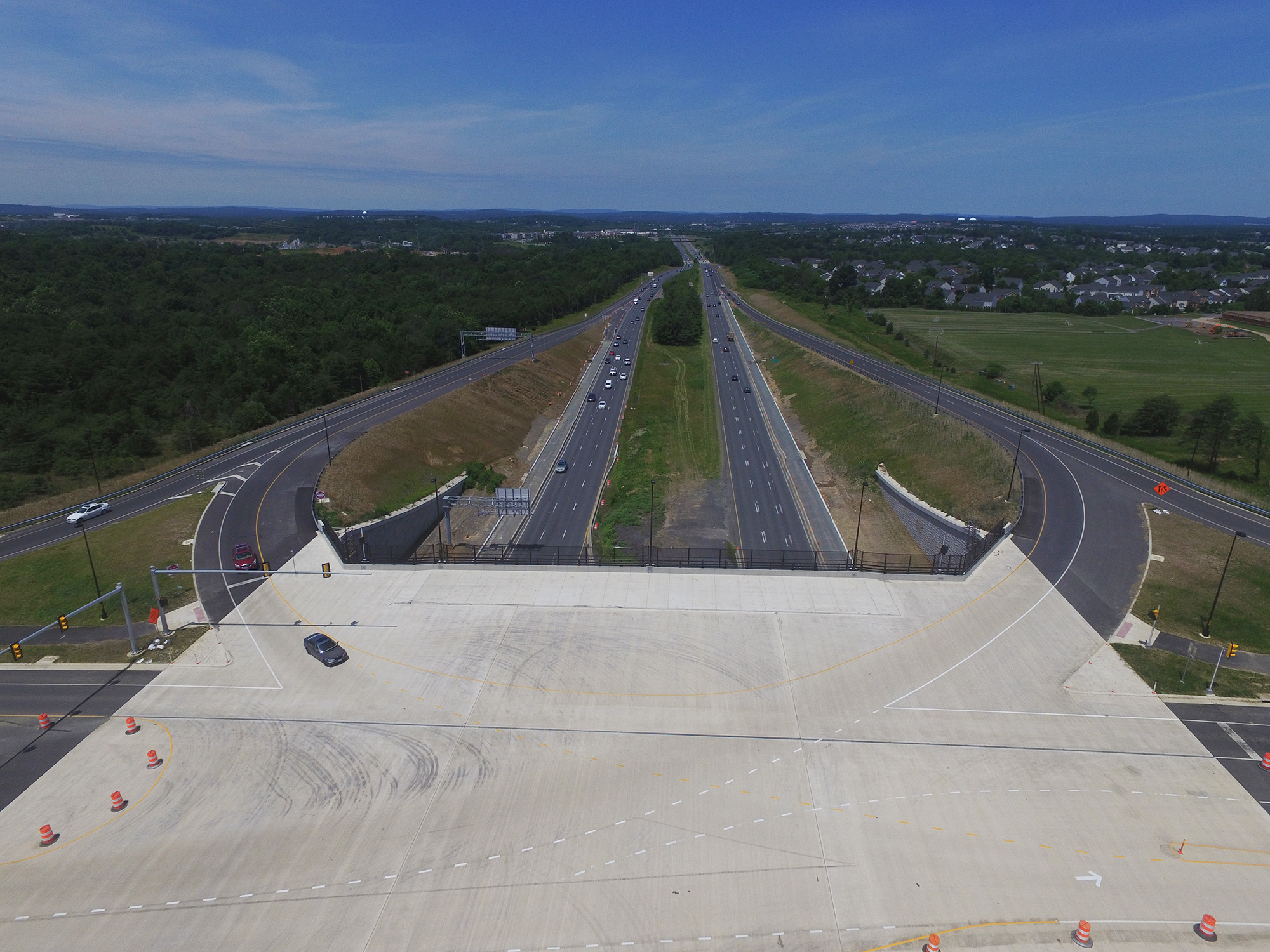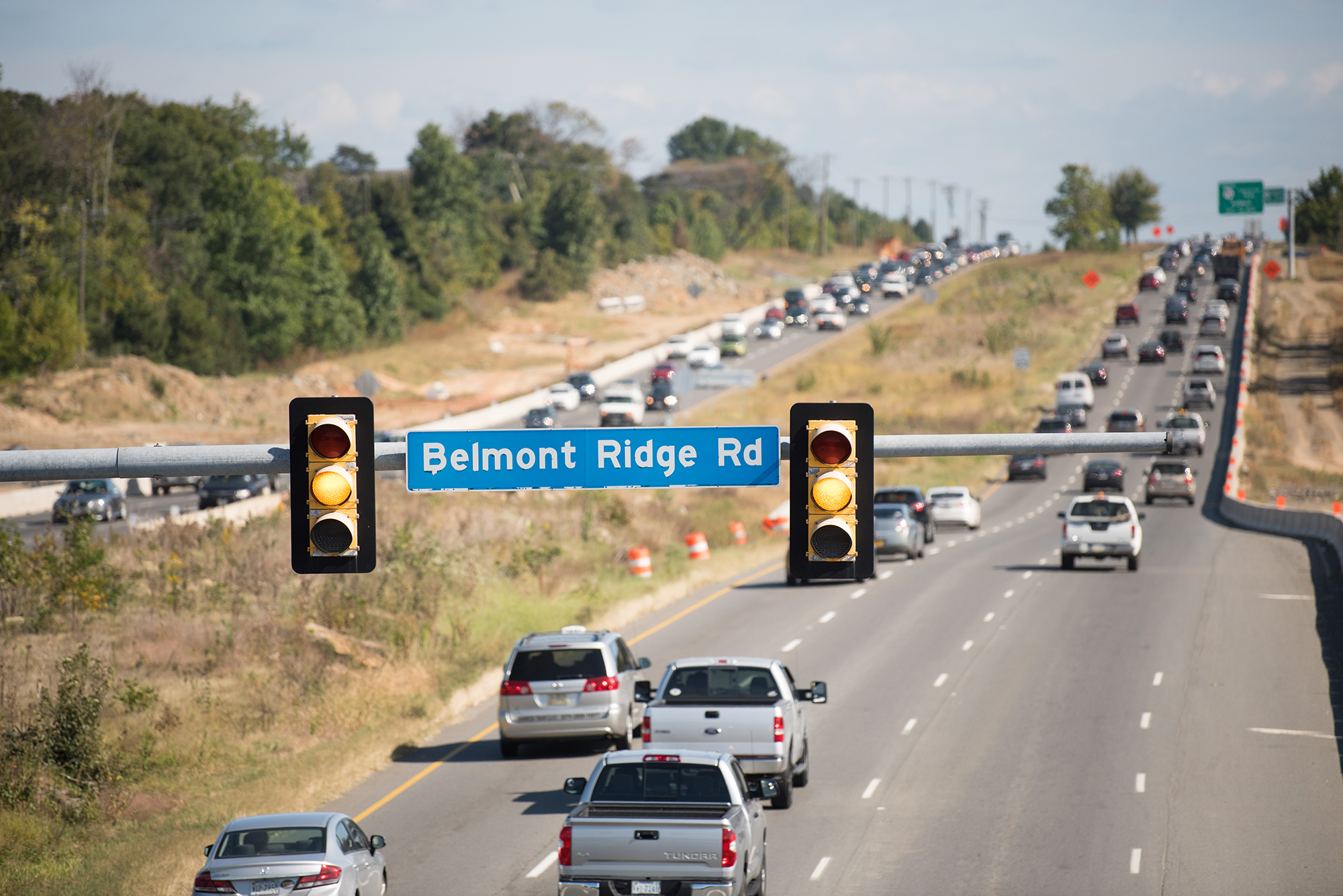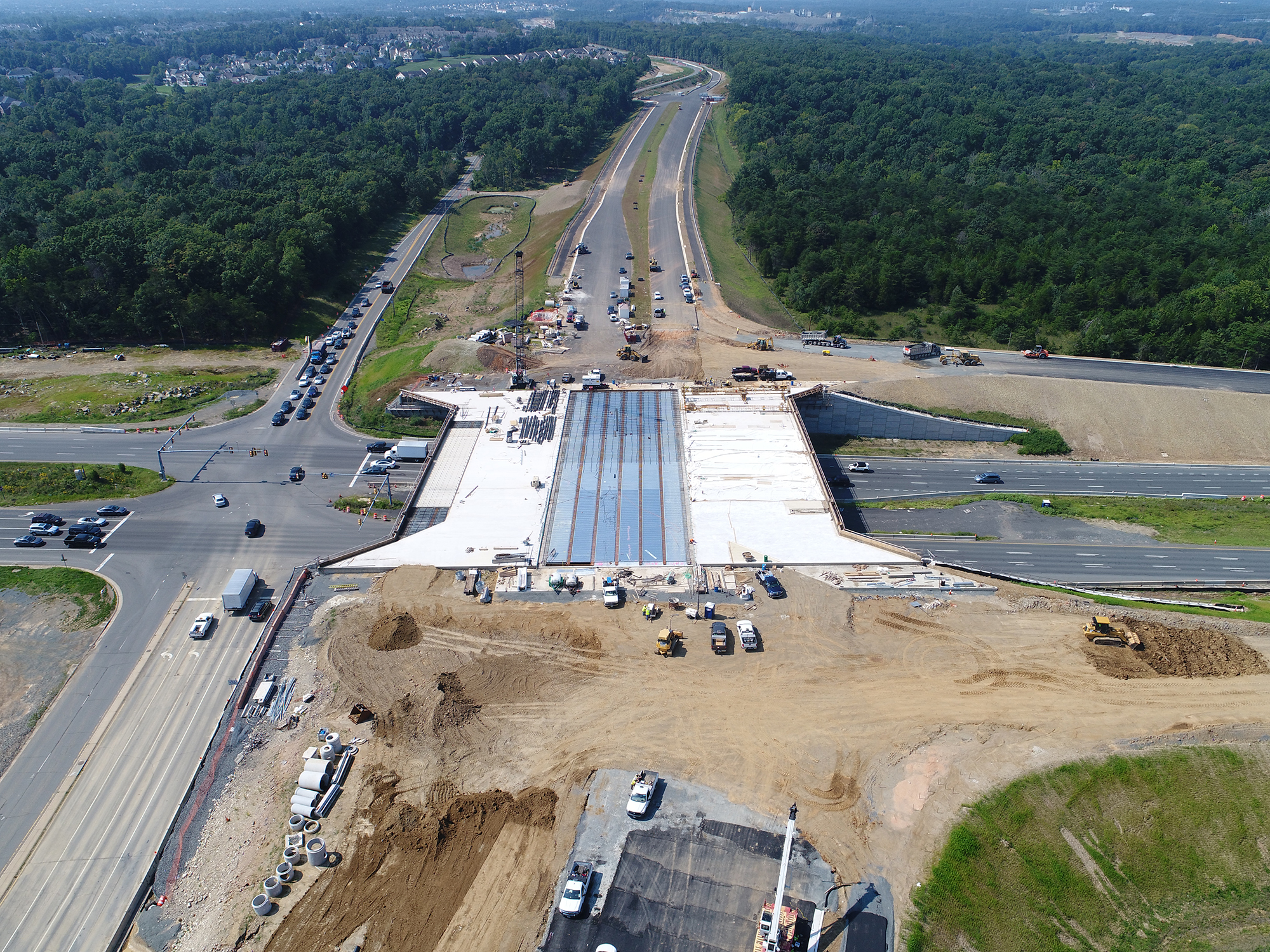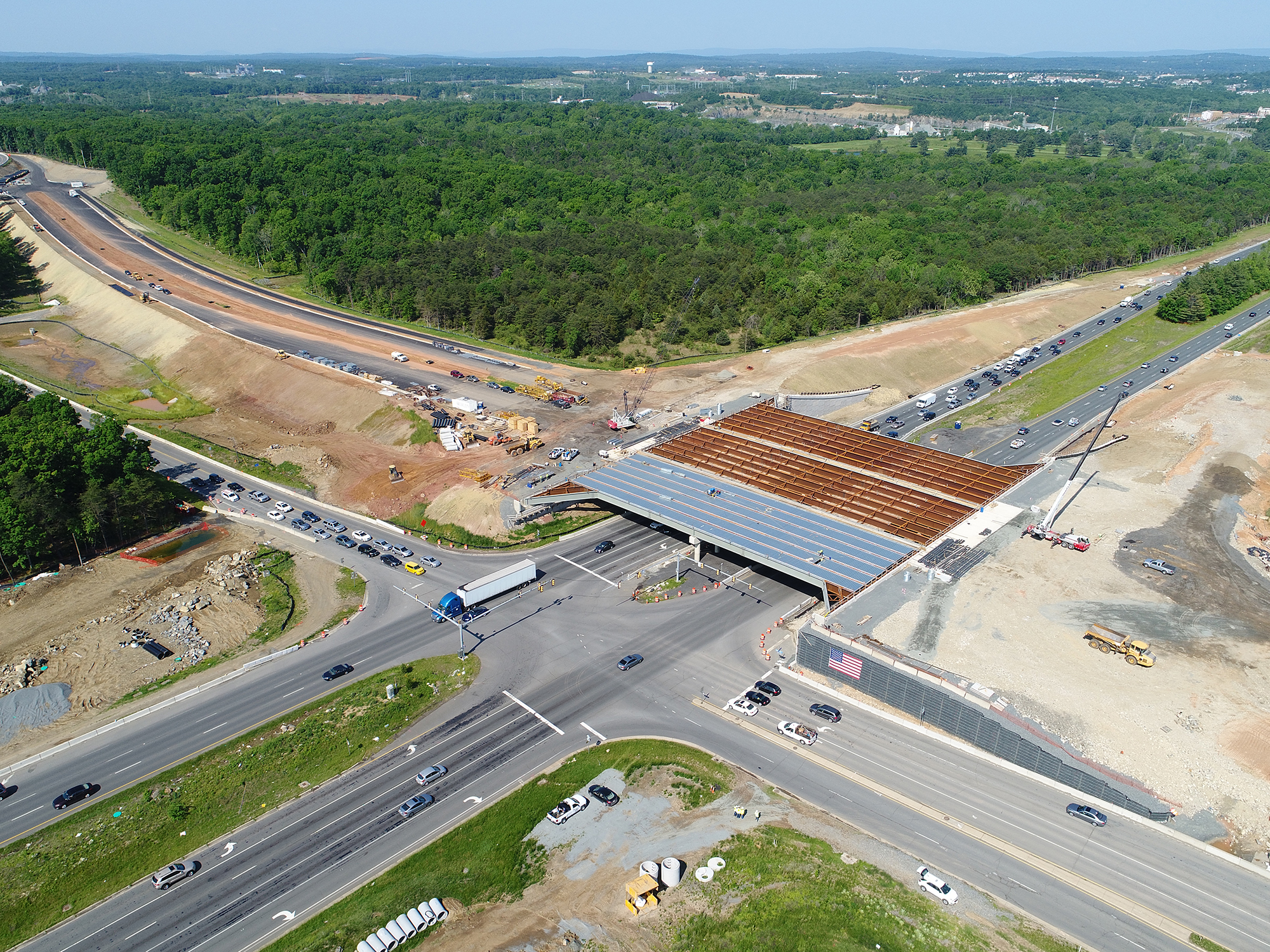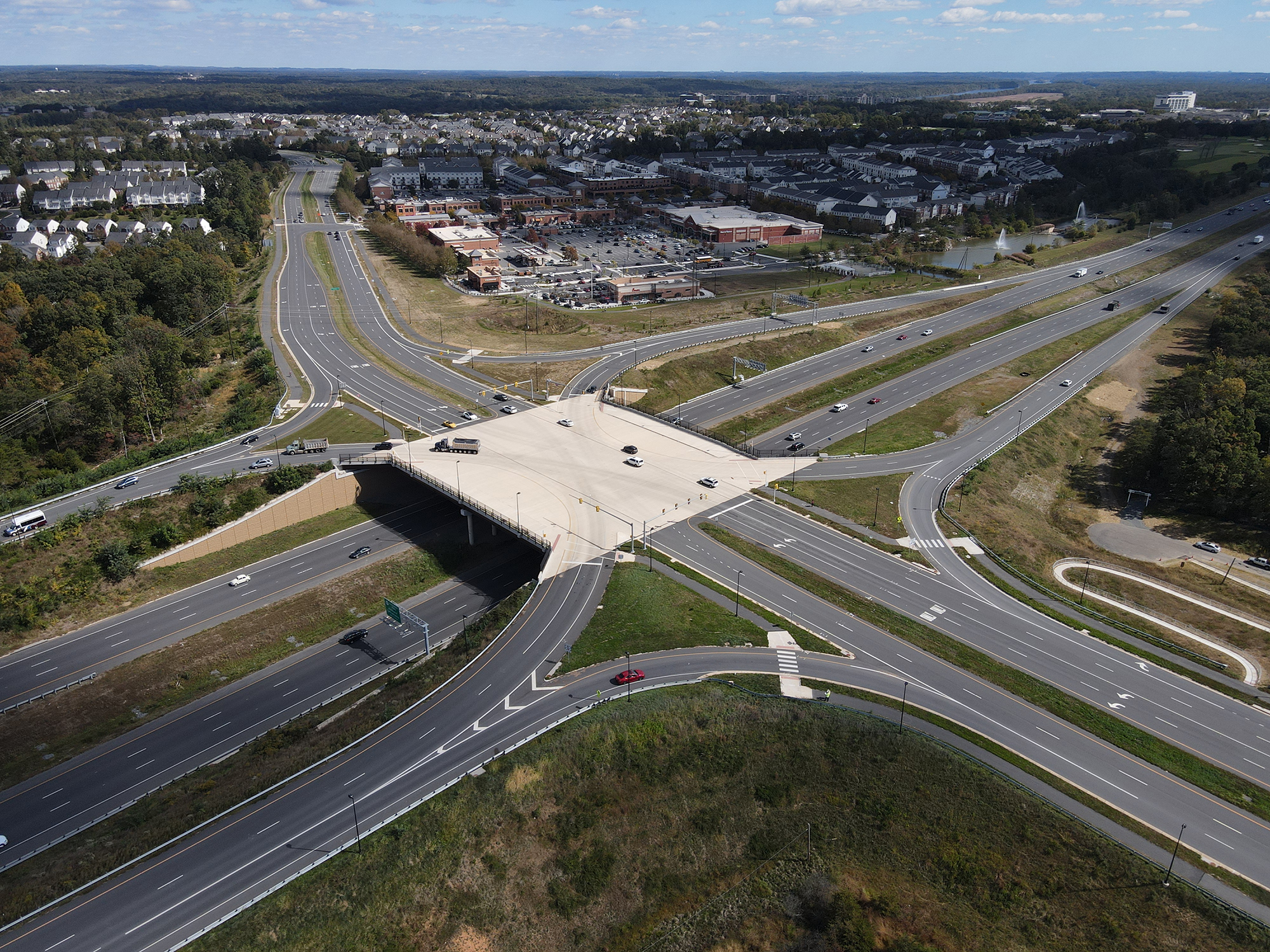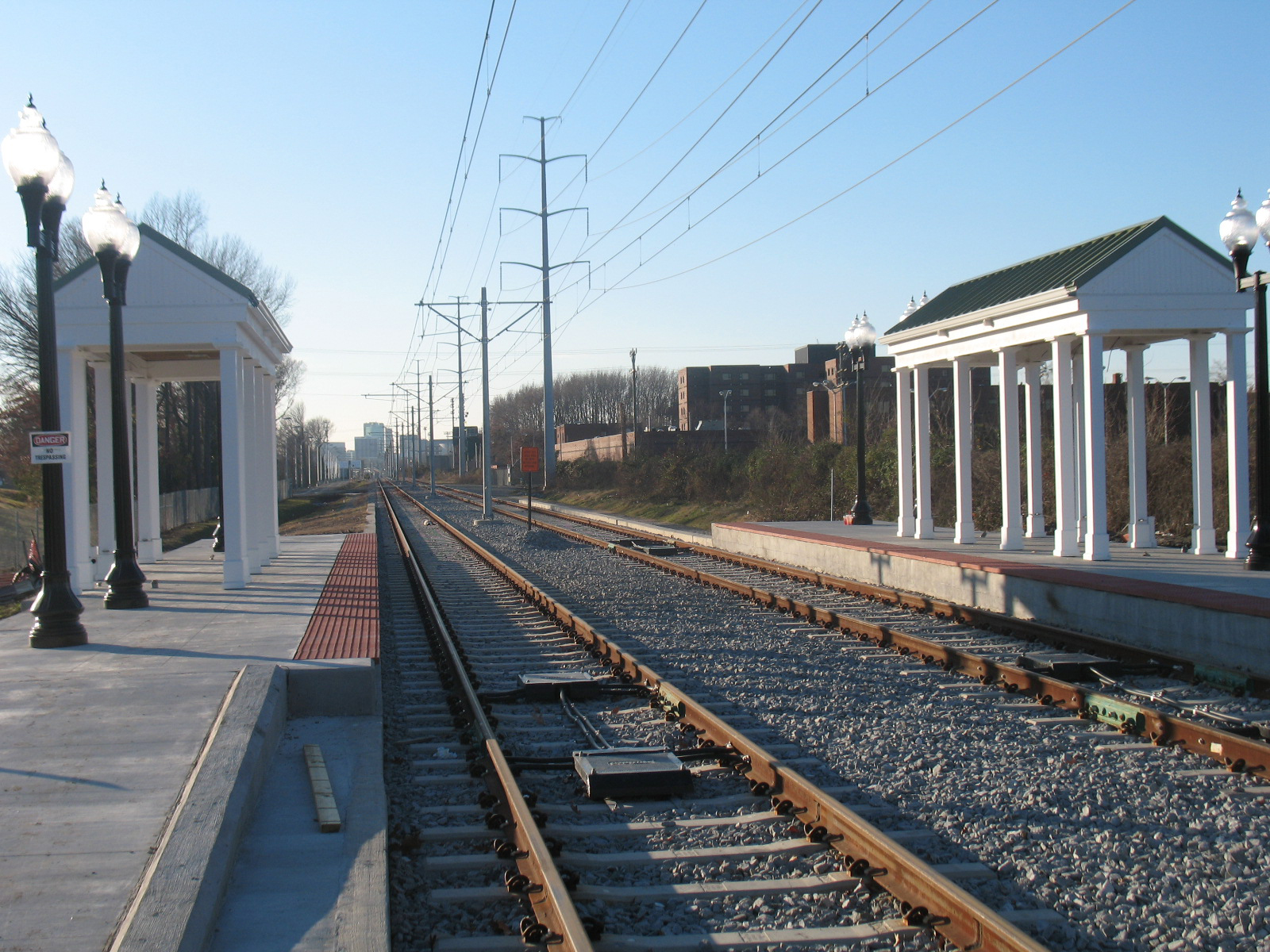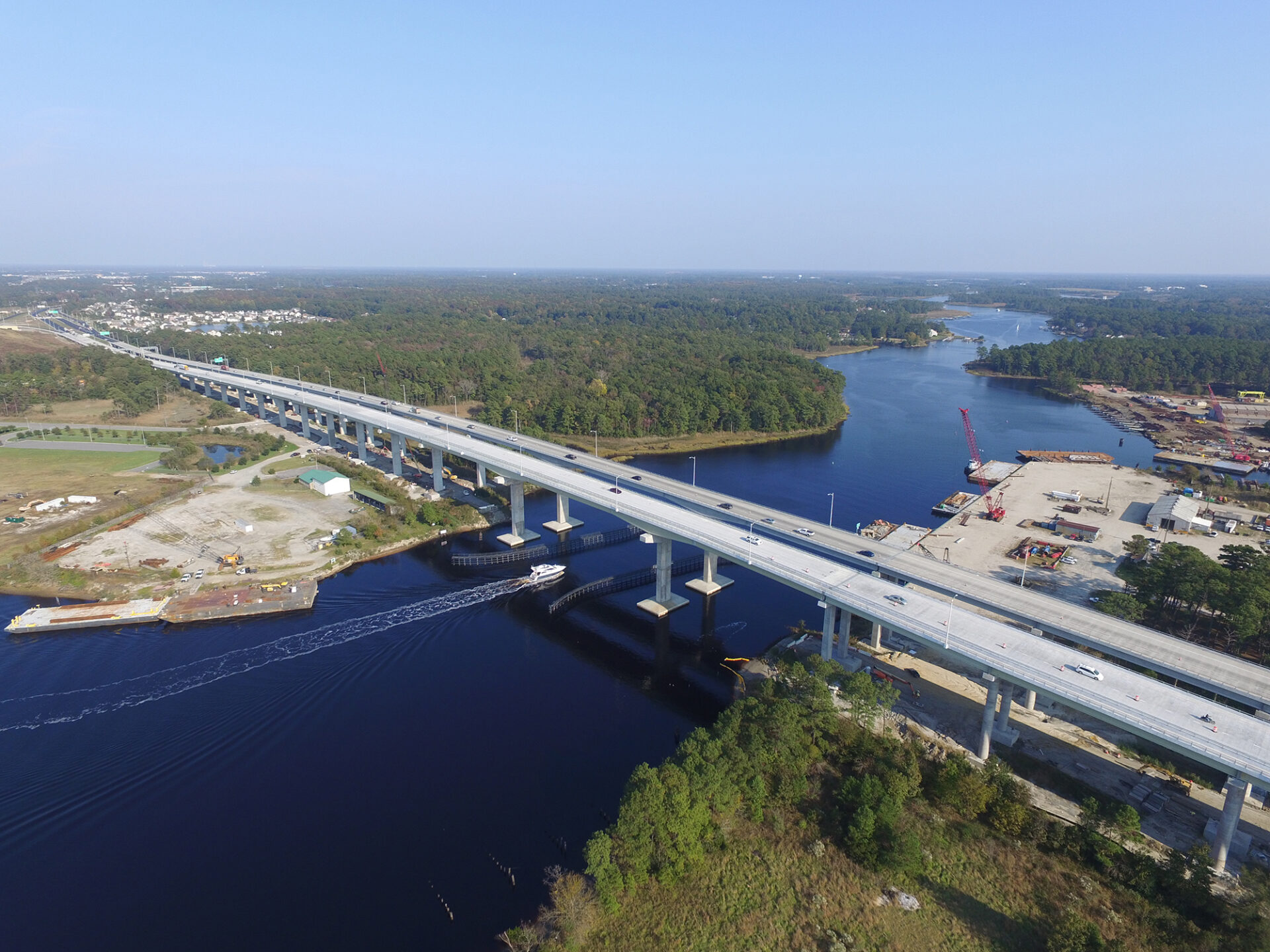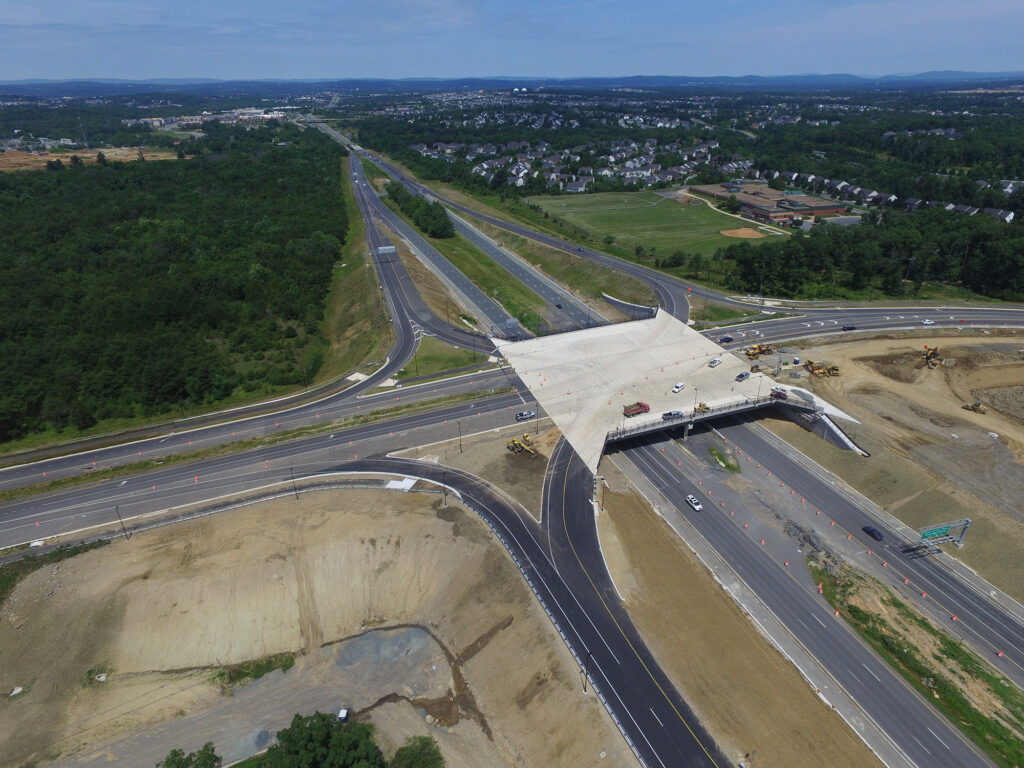
Loudoun County, Route 7/659 Interchange
Ashburn, VA
Project Detail:
Service:
Market:
Awards:
- Heavy Construction Contractors Association (HCCA) Excellence in Infrastructure Award, in the category >$15 million
When Loudoun County realized their population quadrupled in size in the most recent decades, it became clear they were overdue for some improvements to the roadways to accommodate this exponential growth. Loudoun County’s population remained a constant 20,000 for two centuries until 1960 when it began to grow. However, for the past three decades it has experienced near exponential growth from 86,000 to more than 400,000 citizens. Today, Loudoun County is one of the fastest growing counties in the United States and is now the fourth largest countyin the Commonwealth of Virginia.
Challenge
In support of this population explosion, the Loudoun County Countywide Transportation Plan called for roadway capacity improvements throughout the county to alleviate the congestion in the region. State Route 7 is a 73- mile major primary state highway and busy commuter route in Northern Virginia. This heavily traveled route extends southeast from downtown Winchester to downtown Alexandria and largely parallels the old Washington and Old Dominion rail line and the Potomac River. Leesburg Pike is the portion of Route 7 that connects the Town of Leesburg with Alexandria and its origin dates all the way back to 1739. For the Route 7 corridor, the plan called for the removal of multiple at-grade signalized intersections between Route 28 and the Town of Leesburg. It also included capacity expansion of State Route 659 (Belmont Ridge Road) from a two-lane roadway to one with an ultimate condition of either four lanes or six lanes.
This project was the County’s first federally funded and largest transportation project to-date. Because the project also had federal oversight, it required of FHWA involvement. Prior to MBP coming onboard, the County was not familiar with various federal and VDOT processes and steps needed for various aspects of the projects including federal compliance, work order approvals, and project acceptance; utility companies were not progressing fast enough and were behind schedule prior to construction start and caused project delays; and certain phases and elements of work required long term detours not originally shown in the plans.
MBP was selected to provide construction management services during the pre-construction and construction phases that included scheduling and estimating support, risk management and analysis, contract administration, utility coordination, testing, inspection, and street acceptance support. Testing included quality control, quality assurance, and independent quality assurance testing.
Solution
The solution for this project involved the widening of Route 7 by approximately 1.5 miles for interchange acceleration and deceleration lanes. Route 7 auxiliary lane and ramp improvements were designed to accommodate a future widening to eight lanes, consistent with the Loudoun County Countywide Transportation Plan, and Belmont Ridge Road was improved from a two-lane roadway to a median divided four-lane roadway per a design that accommodates a future median widening from four lanes to six lanes.
Pedestrian and bicycle accommodations were provided on Route 659 through the inclusion of 10-foot-wide shared-use paths along both the northbound and southbound lanes. There was construction of a mass concrete, new bridge to carry Route 659 over Route 7. Also, a signalized
intersection was constructed at the single-point urban interchange (SPUI) above Route 7, and new or modified signals were constructed on Route 659. Roadway lighting was installed at the SPUI and on Route 659 to provide illumination for the turning movements at the signalized
intersection. Other improvements called for construction of drainage and stormwater management improvements, construction of a 1,980-foot noise barrier along northbound Route 659, and utility relocation for water and sewer improvements. The completed interchange was turned over to the Commonwealth of Virginia as part of the VDOT Locally Administered Projects (LAP) program using the County’s street acceptance program.
MBP was able to utilize its experience and the experience of its subconsultants to provide support to Loudoun County throughout the project to guide them through the federal and VDOT processes. Loudoun County had not designated the party responsible for the utility
coordination so MBP stepped in to constantly coordinate with the utility companies and oversee utility contractors to keep them moving. MBP immediately began reviewing the general contractor’s CPM schedule to identify the areas within the project limits that needed to have utility
relocations completed and allow the contractor access in time to perform their work as planned. MBP facilitated meetings with the five major utility providers to establish remaining work scope, timelines, and access coordination with the contractor to allow work to proceed simultaneously. Ultimately the contractor submitted a delay impact of 349 calendar days due to utility impacts and MBP worked with the utility companies and the contractor to reduce the impact down to 149 calendar days.
Additionally, MBP’s leadership of the general contractor helped identify and resolve over 88 design challenges. While this number of issues could have resulted in contentious and adversarial relationships, MBP communicated and partnered effectively with the contractor, the design
engineer, and internal staff resulting in a total change order amount that ended up at less than 6% of the original contract value after discounting the delinquent third-party utility relocations cost impacts and the owner requested changes. These efforts resulted in minimal complaints and smooth construction during phases involving detours.
Results
The result was the delivery of Loudoun County’s largest transportation project to-date under the VDOT LAP program. MBP’s involvement aided in the seamless delivery of this project which reduced the county resident and commuter travel time for the Route 7 corridor and improved the overall flow of local transportation.
The project’s cost performance was within budget of the original construction contract amount plus a 5% contingency factor after discounting the delinquent third-party utility relocation cost impacts and owner requested changes. MBP developed independent cost estimates for each of the other 88 potential change orders submitted by the general contractor. Each change was evaluated and negotiated at a fair and reasonable cost. For the delinquent third party utility relocation cost impact, MBP’s negotiation recommendations directly saved the Department of Transportation and Capital Infrastructure over $122,000 during the negotiation of the general contractor’s extended overhead costs based upon negotiated daily extended overhead rate and time impacts.
The project included both federal and state funding that the County traditionally does not use. Through MBP’s support we were able to ensure that full reimbursements were attained by the County for the project.
The Route 7 & Route 659 Interchange project was completed in December 2020, five years from the start for a final constructed value of $51.427 million.

Explore Our Blog
Stay informed with the latest insights, lessons learned, and thought leadership from MBP’s experts.
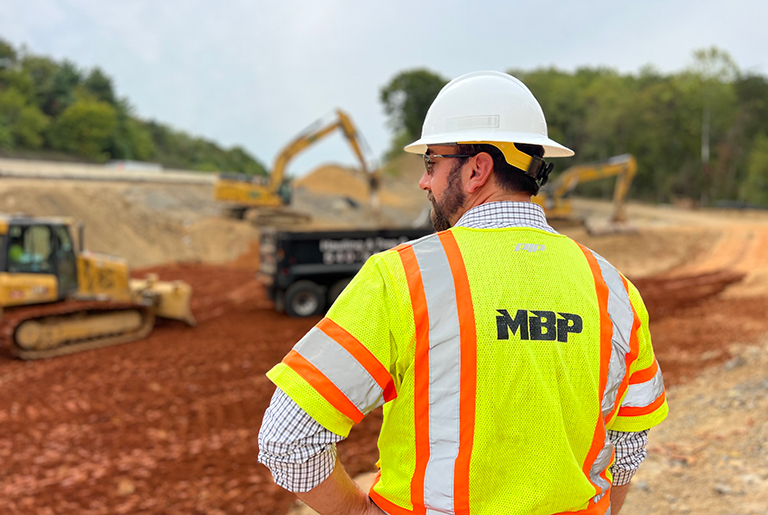
Be a Part of Something Great
At MBP, you’ll be part of a supportive, collaborative environment where your skills are valued, your growth is prioritized, and your work makes a real impact.
